15 Classic Dishes Of Piedmont You Should Know About
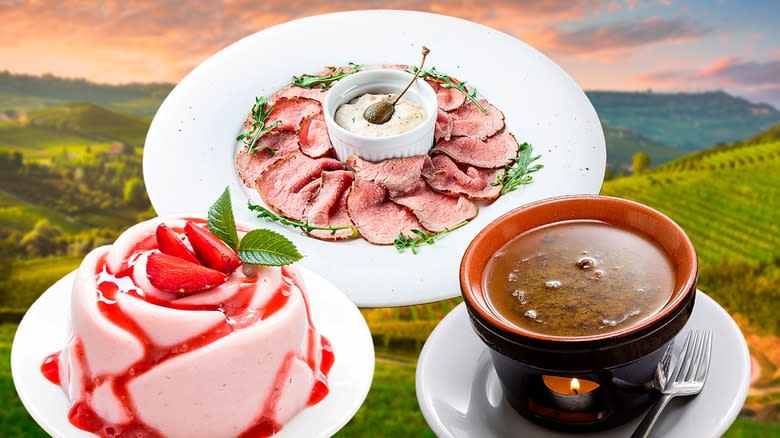
Italian cuisine is highly regional, meaning that if you travel from one area to the next, you might encounter completely different foods. Which is why you will find certain pasta shapes in some parts of Italy but not others, and why you can't necessarily find Sicilian cannolis just anywhere in Italy -- not good ones, at least. The idea applies to pretty much any other Italian dish or dessert aside, perhaps, from pizza, which permeated the country after its invention in Naples.
Piedmontese cuisine is no different, so if you want to try this particular type of food, your best bet is to travel to the region itself, located in northern Italy on the border of France and Switzerland. Not least because much of the cuisine relies heavily on especially sophisticated local ingredients like white truffles and fine wines. Once there, though, you'll have to know what to order, and that's where we come in. We've put together a list of some of the best and most important foods in the Piedmontese culinary landscape, from tajarin (egg pasta) to regional iterations of risotto. Some of these dishes may have made their way into mainstream gastronomic parlance, while others have not. Either way, you can learn about them here.
Read more: 44 Types Of Pasta And When You Should Be Using Them
Vitello Tonnato
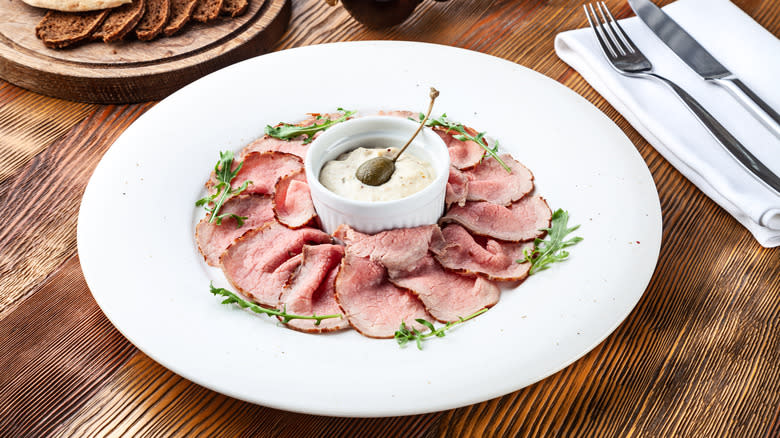
One of the most ubiquitous items you'll see on a menu in a Piedmontese restaurant is vitello tonnato, a dish made of thin cuts of veal laid out on a plate and topped with an egg and tuna sauce resembling mayonnaise. It is typically served as an appetizer and a version of it has been enjoyed throughout Piedmont for centuries, though the first recipe found on paper dates back to 19th century Milan.
Nowadays, any Piedmontese restaurant worth its salt will have some form of vitello tonnato on the menu. Expect to receive it cold, with the meat laid flat on the plate and the sauce -– made of tuna, capers, anchovies, lemon juice, egg yolks, and olive oil -– on top. Your job is to spread the mixture over the meat and pair the two in the ideal proportions for your palate. The meat remains relatively free of seasoning, but the sauce, with its tangy umami notes, will more than make up for that.
Agnolotti

You will find pasta anywhere you go in Italy, but the dish will vary depending on your specific location. For instance, if you want tortellini, you will find plenty of them in Bologna, their birth place. But if you want agnolotti –- another form of stuffed pasta that differs from ravioli primarily due to its folding technique –- head to Piedmont, where they're endemic.
Unlike ravioli, which are defined by their quadratic shape, agnolotti are only folded over once, which gives them a rounded pocket shape. Another idiosyncrasy of theirs is that agnolotti are typically made with roasted meat or vegetables, as opposed to ravioli, which tend to have lighter fillings, like ricotta and spinach. Take this chestnut agnolotti recipe, for instance. Although the filling is a lot of work, the agnolotti only require one sheet of pasta that is then deftly folded into a pocket, as opposed to two sheets and a more laborious folding process for ravioli.
Risotto
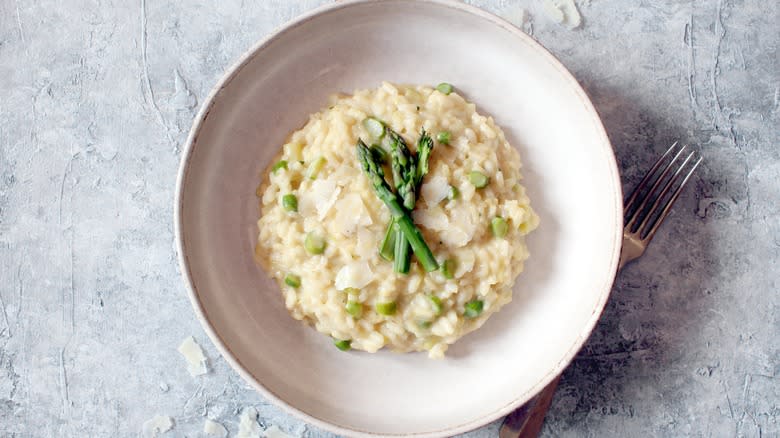
Risotto is a dish you will find almost anywhere in Italy, but the recipe will change drastically depending on where you go. You may also be surprised to find that the rice typically used to make risotto -– carnaroli or arborio -– are both cultivated widely in Piedmont. This makes it a local ingredient, and if anyone were to lay claim to the invention of risotto as a dish, it should be Piedmont. Although early references to risotto date back to Milan in the 16th century, the city was and remains very close to Piedmont, and has long been one of the most important economic and cultural centers of Northern Italy.
Either way, a true risotto alla Piemontese does exist, and it's made with nothing but the basic elements: rice, white wine, onions, butter, broth, grated Parmesan, and seasoning. All other forms of risotto add to this basic structure while leaving the fundamentals unchanged, which may provide a clue as to who really invented this dish.
Bagna Cauda
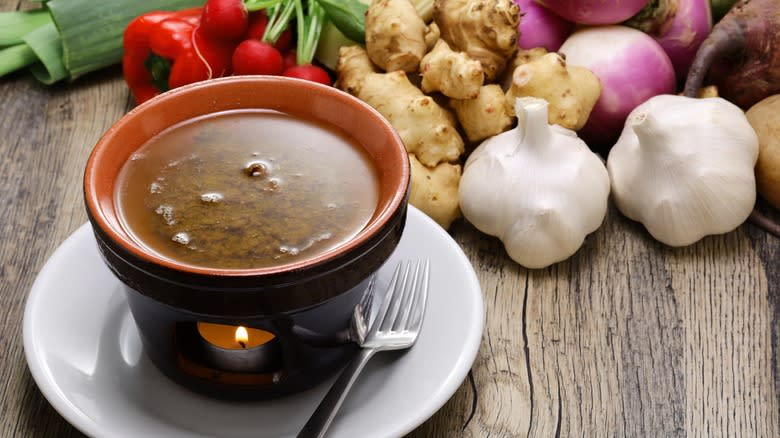
Italian cuisine is about more than just pizza and pasta and other such easy-on-the-palate foods. It also boasts plenty of dishes with bold flavors and unlikely ingredients, as exemplified by the bagna cauda, which in Piedmontese dialect means "warm sauce." It is essentially a dip made with garlic, olive oil, butter, and melted anchovies, to be served with uncooked vegetables like broccoli or cauliflower -– the key is to use fresh, seasonal vegetables, as per tradition.
To partake, simply dip the vegetables in the bagna cauda, which should be served warm in a heat-resistant pot and consumed in a similar fashion to cheese fondue –- whereby all those seated at the table have a clear shot to dip their bread into the cheese pot. The bagna cauda ritual also includes bread, but it's used to soak up any remaining sauce that drips off the vegetables ... though no one will judge you if you want to dip it in the pot.
Salsiccia Di Bra

Who doesn't love a tasty, fatty sausage cooked on the grill and maybe combined with some hearty mashed potatoes? But apparently, cooked isn't the only way to savor sausage, at least not the kind they make in Bra, a small town in Piedmont and the home of the famous salsiccia di Bra, which is traditionally consumed raw -– though it can also be enjoyed grilled if raw really isn't your thing.
But before you give up on trying it the traditional way, know that this type of meat is prepared differently than other sausages. First of all, it's made with beef rather than pork, which makes it safer from the start -– think steak tartare or carpaccio -– though it also contains some amount of pork fat. Second, it's made using only quality, local ingredients that are strictly regulated. You can recognize this particular type of sausage by its presentation: at the butcher's, it always comes in a long, thin casing fashioned into a spiral. At a restaurant, you may find it served as an appetizer with some breadsticks or artisanal bread.
Gianduja

Gianduja chocolate is one of Piedmont's finest creations, even though it was invented by historical happenstance. As the story goes, Napoleon imposed a blockade on goods coming from Britain to Europe in the 1800s, which included cocoa. Piedmontese chocolate makers thus found themselves with a shortage of their primary material. To make up for it, they enlisted the help of the locally occurring hazelnut, which they ground up and blended with the chocolate they had left.
The result was Gianduja chocolate, named after a beloved Italian theater character and representation of a kindly Piedmontese peasant of yore. Today, you can find gianduja chocolates in any chocolate shop in Piedmont, and gianduja ice cream graces most local ice cream parlors. Gianduja is also believed to have been the precursor to Nutella, which is also made with chocolate and hazelnuts. The flavor of gianduja, in fact, is not too far off from Nutella: you may find that it intensifies the taste of the chocolate while adding a nutty dimension to it.
Tajarin
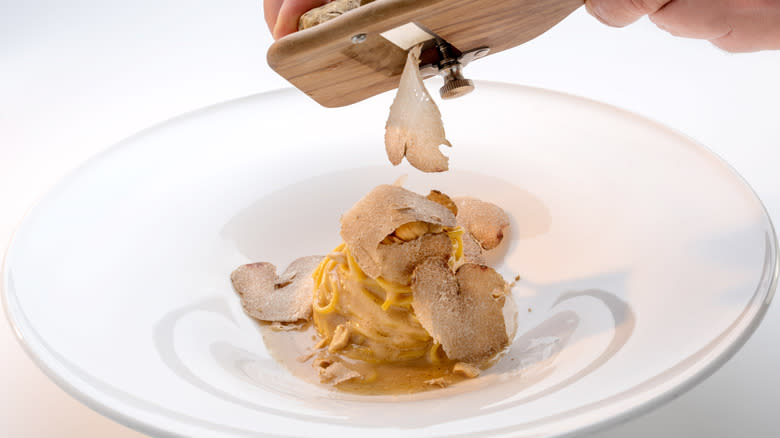
While you may have heard of tagliolini, a long, thin egg ribbon pasta, you may not know about tajarin, which is pronounced "tah-ya-reen" and is a Piedmontese dialect term used to describe the same thing. This pasta is typical of the region and is usually served with a meat sauce or with a simple combination of butter and herbs.
You are likely to find tajarin in most Piedmontese restaurants any time of the year. But to enjoy them at their best, be sure to select a restaurant that makes its own pasta -- not a difficult task. Turin, Piedmont's main city, boasts a number of spectacular restaurants serving local cuisine, and one of the best places to find tajarin is at Le Vitel Etonné, which makes its own pasta on a daily basis. In particular, it makes tajarin with 36 egg yolks, which gives the pasta a silky texture and rich flavor.
Alba White Truffle
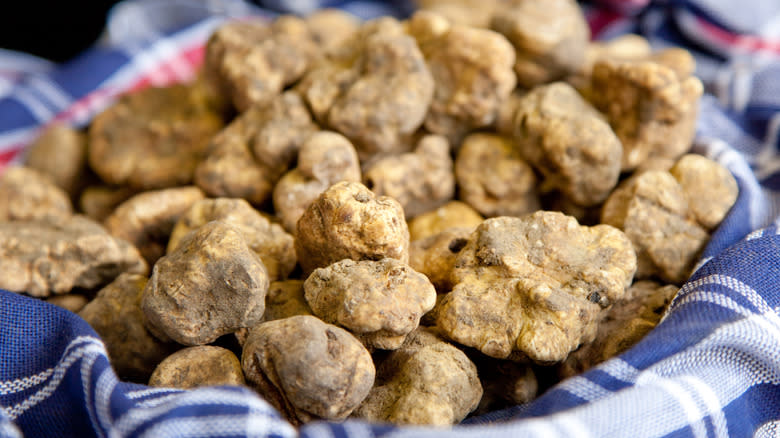
Once a year, Alba (a small city in Piedmont) holds the International White Truffle Fair, which will be in its 94th year this fall. During the fair, truffle farmers from the region gather to sell their truffles, along with other truffle-infused products like pasta, sauces, oils, and cheeses. A fair number of other local fine foods can be found here too, including hazelnut-based products and regional wines.
One of the benefits of this fare though, is the opportunity to get your hands on some of the freshest, finest truffles known to the culinary world so that you can then go home and shave them onto your risotto or pasta dishes to your heart's content. Indeed, the white truffle can scarcely be found anywhere else. Unlike the black truffle, which hails from France but can be cultivated anywhere, this particular type of white truffle only grows in Piedmont, and during the fall, you will find it on the menu at many a fancy restaurant, usually as an optional addition to a dish with an added fee.
Mixed Boiled Meat
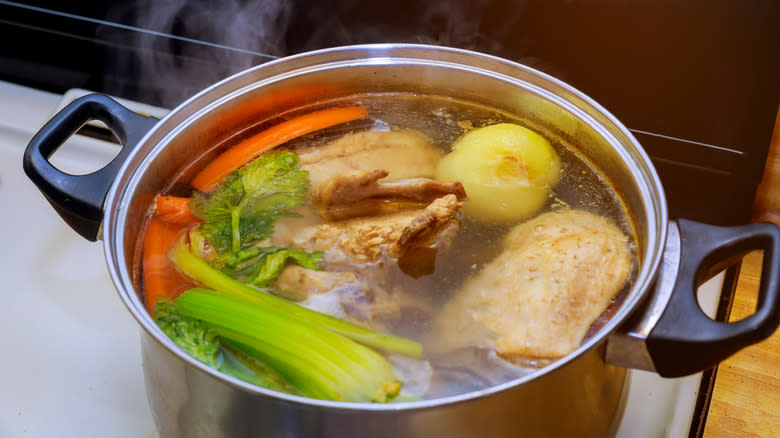
Boiled meat may not sound like the most appetizing dish in the world, but putting the imagery aside, this Piedmontese specialty actually has quite a bit to offer the tastebuds, especially when it's paired with the traditional sauces, including the green bagnet -- made with parsley, anchovies, garlic, and stale breadcrumbs -- or the pungent red bagnet, made with tomatoes, garlic, mustard, vinegar, and horseradish.
But the meat holds its own too, both in terms of flavor and texture. The mixture of meat usually includes seven cuts of beef, such as shoulder and shank as well as offal parts like cheek and tail, which are boiled together with a handful of herbs until tender and buttery. Serve the boiled meat with boiled vegetables and potatoes, which can also be dipped into the sauces. This meal tends to be very hearty, and is therefore typically served during the colder months.
Salsa Verde

You may know salsa verde as a typical Mexican condiment made with tomatillos, avocado, jalapeños, and cilantro, and served with tortilla chips. But salsa and verde have the same meaning in the Italian language, that is to say green sauce, though their version is made with different ingredients.
In Italy, salsa verde is known as a Piedmontese specialty made with olive oil, parsley, garlic, anchovies, capers, lemon juice, and seasoning. Its tangy, umami-rich flavor pairs well with hearty steaks, balancing out their savory, rich profiles. Indeed, this salsa originated alongside the mixed boiled meat dish as a way to add flavor to the various cuts. Originally prepared with a mortar and pestle, this versatile salsa can now be made in a food processor. For best results, it is recommended to let the salsa rest in a cool place for an hour and a half before serving it, so the flavors can thoroughly blend together.
Baci Di Dama

This cookie, whose name literally means lady kisses, is made with two halves of hazelnut cookies glued to each other with a dark chocolate paste, an image that in fact, represents the two cookies kissing. The recipe makes use of a plentiful ingredient in Piedmont, the hazelnuts, by grinding down the nuts and mixing them with flour, butter, sugar, and cornstarch to create a brittle cookie. Once out of the oven, chocolate is spread over the base of half the cookies, which is then topped with the other half of the cookies.
One of the joys of these cookies, which originated in the town of Tortona but that you will find in many cafés and pastry shops all over Piedmont, is their crispy texture, heightened by the use of cold butter (instead of creamed room-temperature butter) during the cooking process. These sweet treats are ideal to serve with coffee or tea and can be enjoyed in the morning or afternoon.
Tramezzini
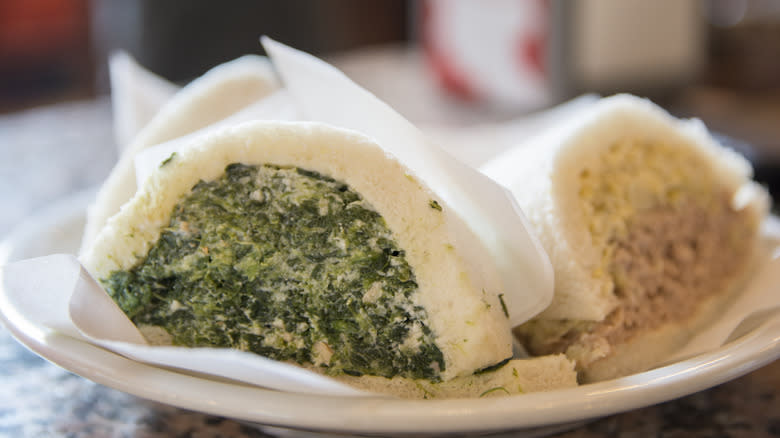
A tramezzino is a specific type of sandwich made with soft white bread whose crusts have been removed, and which has been cut into a triangular shape. Once these defining features are in place, the sandwich can contain practically any type of filling and still qualify as a tramezzino. Popular fillings include tuna salad, hardboiled eggs, or prosciutto with cheese, and in most cases, these will come with a healthy dose of mayo.
Indeed, the tramezzino might be one of the most casual Italian foods out there. And in fact, it's not quite a meal: it's mostly consumed as a snack or as part of the aperitivo, which Italians take a few hours before dinner and which usually constitutes a light alcoholic drink with some finger food. Tramezzini are popular throughout Italy, and you can find them practically anywhere, but legend has it that they were invented in Piedmont, and more specifically at Caffé Mulassano in Turin. Although the origin story is more myth than reality, it is widely believed that when a couple of Italians who had previously lived in America -– and had therefore been exposed to American bread and sandwiches –- moved back to Italy and purchased Caffé Mulassano in 1925, they took what they knew of the American sandwich and fashioned it into a type of meal Italians had never seen before.
Grissini

Grissini is what Italians call breadsticks, though they tend to be thinner and crunchier than what you might encounter at Olive Garden. This food is widespread in Italy, and there was a time where restaurants throughout the country would provide packages of them at every table along with the bread they served at the tables.
Yet even grissini have an origin story, and it all started in Piedmont. Back in the 17th century, the locals called their traditional bread ghërsa, and it was long and skinny (though not as much as modern-day grissini). As the story went, this bread was not terribly easy to digest, so after several people were taken ill -- including the first king of the house of Savoy -- local bakers attempted to make the bread more digestible. They made thinner and crispier. It seems that the modification worked, because grissini endure to this day, while ghërsa has been largely lost to history.
Panna Cotta
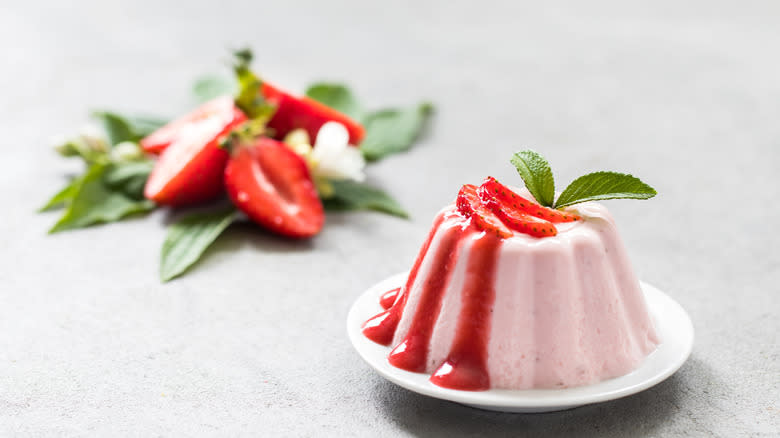
Italian restaurants abroad, whether they specialize in the cuisine of Sicily or Rome, often have panna cotta on the menu. But the dessert is actually typical of Piedmont, where it was invented fairly recently, at the beginning of the 20th century. The term essentially means "cooked heavy cream," and is almost as simple as it sounds: in addition to cream, it also comprises sugar and milk, and that's about it. It is typically served with a fruit coulis or syrup.
One of the perks of panna cotta is that it is such a simple recipe that it can be experimented with at will. You can add a wide range of flavorings to the actual cream -– vanilla being nearly de rigueur these days -– in addition to pairing it with all sorts of toppings, like this strawberry panna cotta recipe; the strawberries are processed and added to the mixture.
Giardiniera
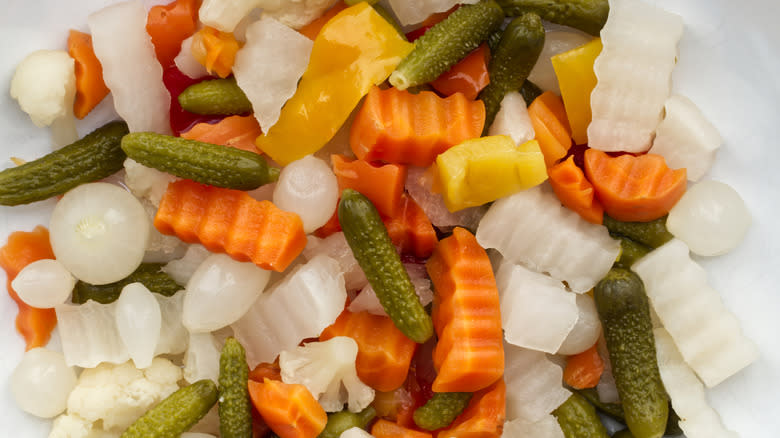
The ideal antipasto is one that whets the appetite without making you too full to continue on to your first course. Giardiniera, a Piedmontese antipasto made with mixed pickled vegetables and sometimes canned tuna, fits the bill. It's meant to be consumed on its own or as part of a charcuterie board, and always before a heartier dish.
This may differ from what you know of giardiniera, especially if you're from Chicago, where a similar concoction is used more like a condiment on burgers and sandwiches, and may sometimes come with spicier touches. Either way, the history of this dish is as humble as its ingredients. The copious amounts of vinegar in it stem from the effort of preserving fresh harvest vegetables through the winter. In other words, giardiniera was an inexpensive peasant food that made its way to the big leagues by dint of its simplicity, versatility, and unique flavor.
Read the original article on Tasting Table


